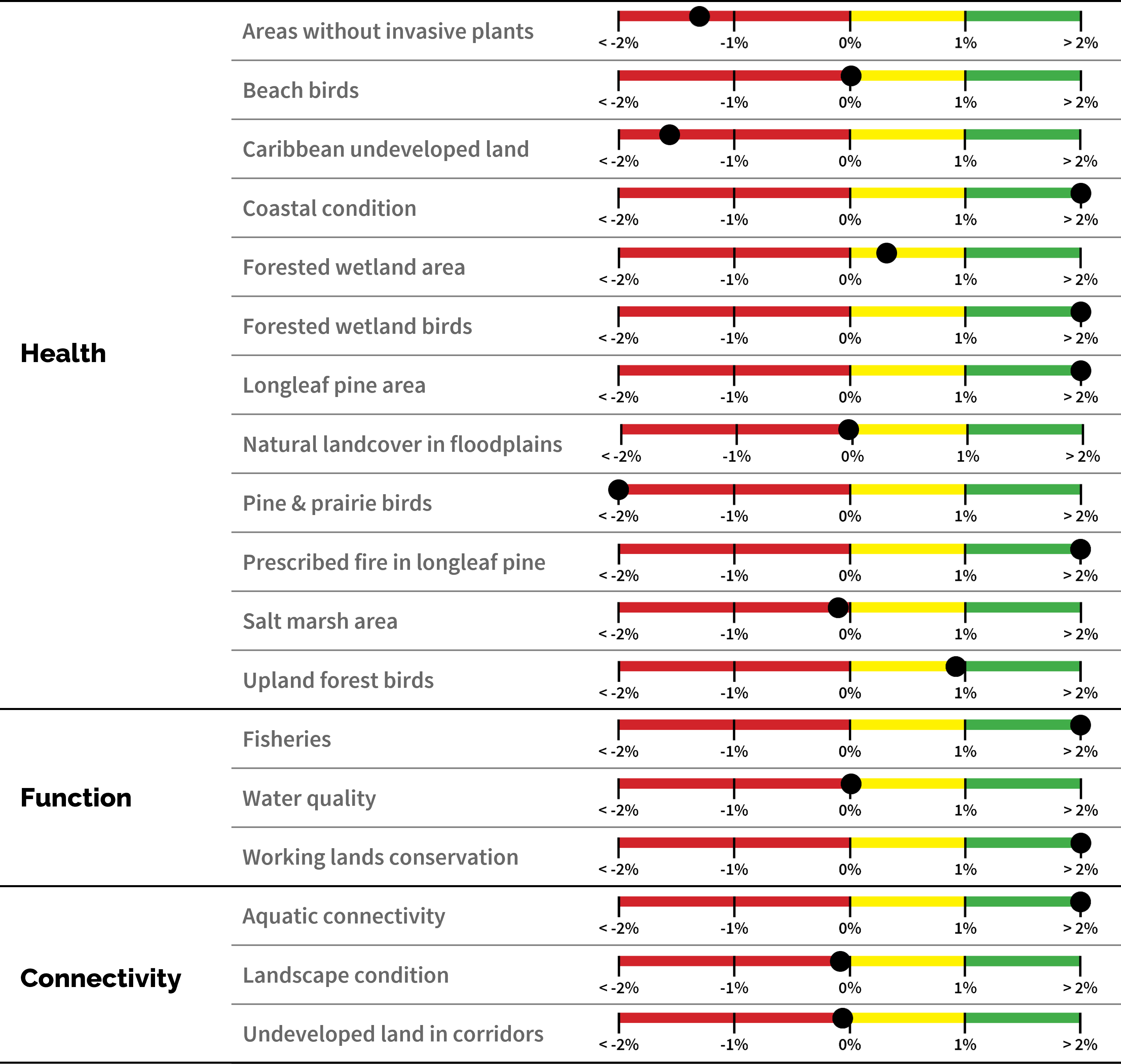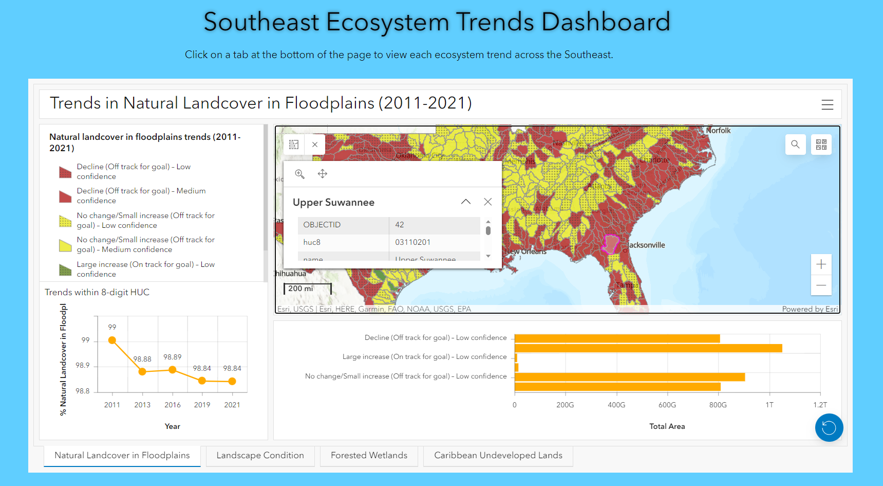Recent trends in Southeastern ecosystems - 2023 SECAS goal report released!

The 2023 report on progress toward the SECAS goal is now available! It uses data from Southeast-wide monitoring programs to look at recent trends in indicators of the health, function, and connectivity of Southeastern ecosystems.
This report includes many improvements, including:
- New indicators: Natural landcover in floodplains, landscape condition, and Caribbean undeveloped land
- Updated data and methods for existing indicators: Forested wetland area, prescribed fire in longleaf pine, undeveloped land in corridors, aquatic connectivity, and fisheries
- A new quantitative approach for estimating uncertainty in trends for some indicators
- Trends going further back to 2011, when SECAS was established (instead of the most recent 3-6 years)
Along with these updates, user support staff can now run trend estimates for custom areas for three indicators: natural landcover in floodplains, landscape condition, and forested wetland area. If you’re interested in those, contact a member of the user support team. We’re also working on making those trends available in a spatial dashboard that should become available next year.

The major results from the 2023 goal report are similar to previous reports. The condition of most of the indicators are still improving. The pine and prairie birds indicator is still the most off-track for the meeting the SECAS goal. This is a major reason for the extra focus on grasslands within the SECAS partnership.
If you’d like help using the SECAS goal and the goal report in your work, feel free to contact a member of the user support team. We love helping folks with stuff like this and it’s an important part of how we prioritize what to fix in future years.